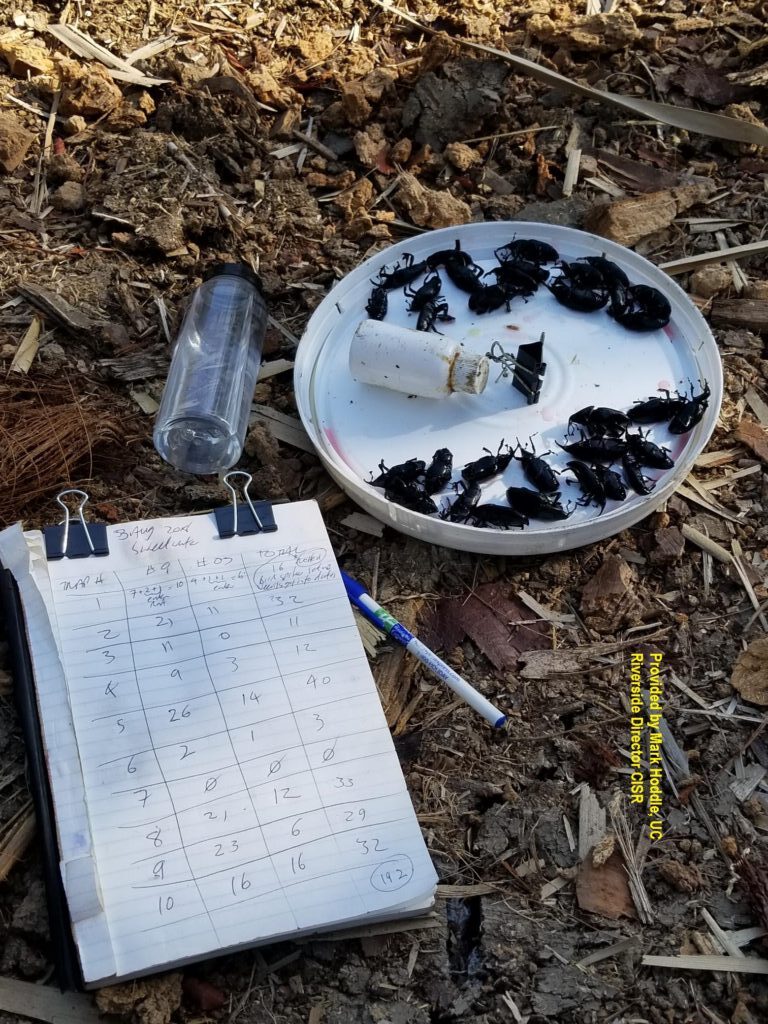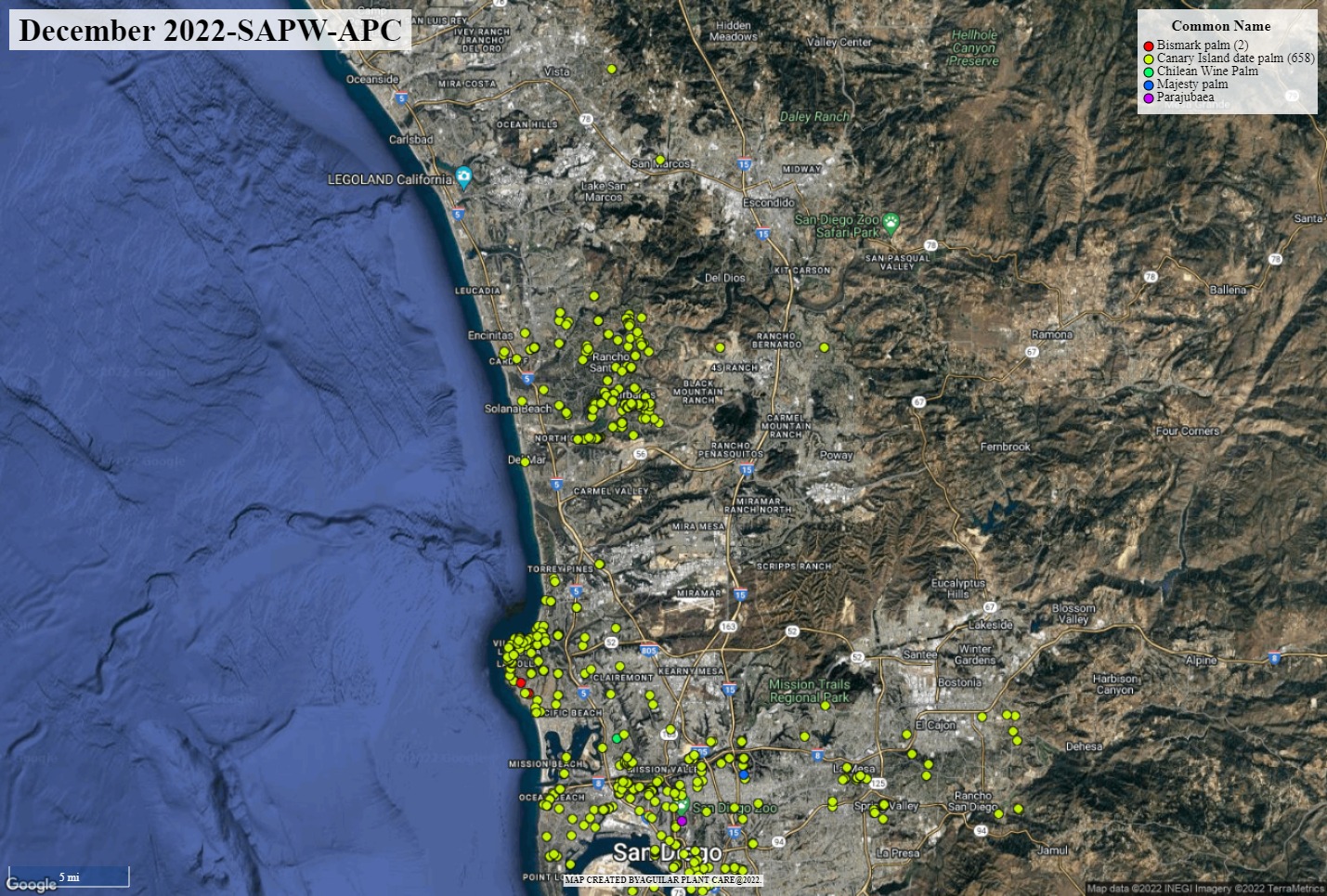The South American Palm Weevil
Canary Island Date palms been under attack by a new exotic and invasive weevil known as the South American Palm Weevil (SAPW), Rhynchophorus palmarum (L.)
The SAPW is native to parts of Mexico, Central and South America, and the Caribbean. SAPW was first collected from infested Canary Islands date palms in Tijuana, Mexico in 2010.
After physical examination by Mark Hoddle (UC Riverside-Director CISR) of the declined palm it was found to be infested with South American Palm Weevil (SAPW).
South American Palm Weevils were later captured in monitoring traps in San Ysidro, California in 2011 (~ 5 miles north of Tijuana).


Canary Island Date palms been under attack by a new exotic and invasive weevil known as the South American Palm Weevil (SAPW), Rhynchophorus palmarum (L.)
The SAPW is native to parts of Mexico, Central and South America, and the Caribbean. SAPW was first collected from infested Canary Islands date palms in Tijuana, Mexico in 2010.
After physical examination by Mark Hoddle (UC Riverside-Director CISR) of the declined palm it was found to be infested with South American Palm Weevil (SAPW).
South American Palm Weevils were later captured in monitoring traps in San Ysidro, California in 2011 (~ 5 miles north of Tijuana).

At the same time Canary palm mortality also began to spread throughout border cities of San Diego County such San Ysidro, Chula Vista, Imperial Beach and Bonita.
Since the first findings in 2011, trapping and monitoring in the Bonita Sweetwater Preserve, Mark Hoddle and team are now catching “about 200 adult weevils a month, and Palm survey indicates urban palms being killed at a rate of about 3-5% every 6 months”.
As of December 2022 the SAPW has been trapped as far north as Carlsbad and San Marcos.
The furthest confirmed Canary Palm deaths have been recorded in Vista and San Marcos, CA.
Currently, the most northern “hot spot” is the Rancho Santa Fe, Fairbanks and Del Mar areas.
While the palm deaths and SAPW activity continues to increase in the La Jolla area.
In addition, different host Palms were confirmed as being attacked and killed by the SAPW such as Bismarck Palm, Phoenix reclinata Palm, Chilean wine palm, King Palm and other more exotic palms such as the Parajubaea at the San Diego Zoo.
Heading into 2023, the likelihood of continued spread to northern areas of San Diego is very high. Ensuring your palm is treated and protected is the best way to help keep it alive.
Call APC today and let us help keep your palms SAPW free.


Our map of confirmed Palm Deaths as of December 2022.
As of December 2022 the SAPW has been trapped as far north as Carlsbad and San Marcos.
The furthest confirmed Canary Palm deaths have been recorded in Vista and San Marcos, CA.
Currently, the most northern “hot spot” is the Rancho Santa Fe, Fairbanks and Del Mar areas.
While the palm deaths and SAPW activity continues to increase in the La Jolla area.
In addition, different host Palms were confirmed as being attacked and killed by the SAPW such as Bismarck Palm, Phoenix reclinata Palm, Chilean wine palm, King Palm and other more exotic palms such as the Parajubaea at the San Diego Zoo.
Heading into 2023, the likelihood of continued spread to northern areas of San Diego is very high. Ensuring your palm is treated and protected is the best way to help keep it alive.
Call APC today and let us help keep your palms SAPW free.

